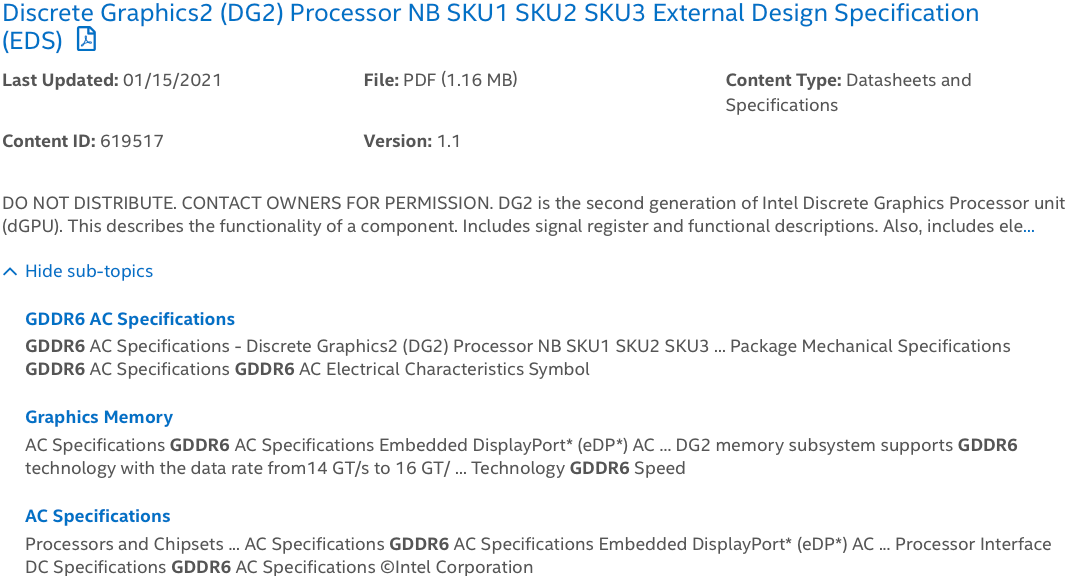Intel Gives Glimpse of Xe-HPG DG2 Gaming GPUs: Up to 512 EUs, PCIe 5.0, GDDR6
Intel has started to publish documents related to its upcoming Discrete Graphics 2 (DG2) GPUs based on the Xe-HPG microarchitecture, inadvertently revealing some of their specifications. As expected, Intel's Xe-HPG family looks like it'll include multiple models and compete across desktops and laptops and different levels of performance.
In order to prepare for a new product launch, Intel not only has to send various samples to its partners, but it also has to publish extensive documentation about the parts. Usually, such documents are hidden in password-protected sections of Intel's website, but a simple search of the term "discrete graphics2" revealed dozens of documents about Intel's DG2 family, as well as some of its specifications, as spotted Friday Twitter leakers @momomo_us and @Komachi_Ensaka.
According to the newfound documents, Intel's DG2 lineup will include at least five different models for notebooks and at least two models for desktops. For some reason, notebook GPUs are referred to as SKU1 through SKU5; whereas, desktop graphics processors are called SoC1 and SoC2.
The new GPUs will support a PCIe 5.0 interface, GDDR6 memory running at 14 GT/s or 16 GT/s, HDMI 2.1 and DisplayPort Alt Mode over USB Type-C, according to Intel's documents. However, it is unclear whether all the capabilities will be enabled on all SKUs.





Based on names of the documents that Intel has made available to its partners, the company and its allies are currently testing five mobile DG2 graphics processors with 96 execution units (EUs), 128 EUs, 256 EUs, 384 EUs and 512 EUs.
Meanwhile, the desktop-oriented SoC1 is believed to feature 512 EUs.
Since Intel's DG2 products are based on the yet-to-be-revealed Xe-HPG architecture tailored for gaming graphics processors, it's hard to estimate how the new graphics solutions from Intel will stack up against existing DG1 product or the best graphics cards from AMD and Nvidia.
Get Tom's Hardware's best news and in-depth reviews, straight to your inbox.
Assuming this is the full lineup, it's a bit odd to see Intel prepare a relatively broad lineup of GPUs for notebooks and only two graphics processors for desktops. It's possible that Intel plans on revealing more desktop GPU models (with more EUs, perhaps). It's also possible that the company will try to address a sweet spot niche of the gaming graphics cards market with a limited number of offerings.

Anton Shilov is a contributing writer at Tom’s Hardware. Over the past couple of decades, he has covered everything from CPUs and GPUs to supercomputers and from modern process technologies and latest fab tools to high-tech industry trends.
